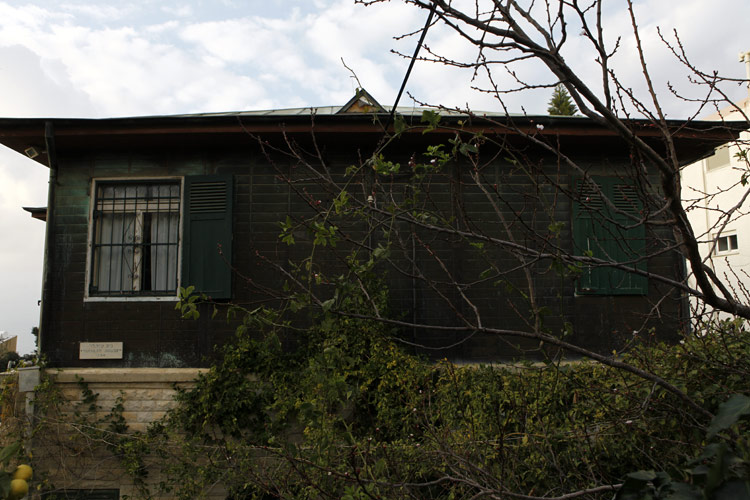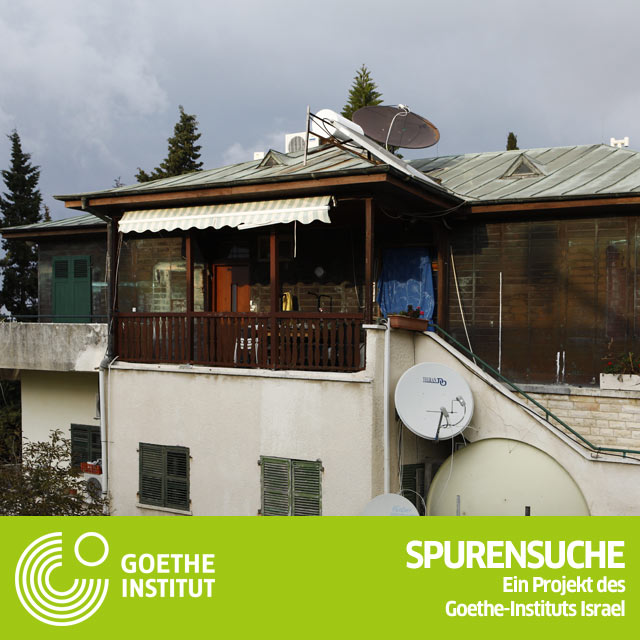Israel:The Jaffa model: Unterschied zwischen den Versionen
(Die Seite wurde neu angelegt: „© Goethe-Institut “Take a copper house with you to Palestine. Despite the intense heat your rooms will …“) |
K (Newline insert before newBox via script) |
||
| (7 dazwischenliegende Versionen von 3 Benutzern werden nicht angezeigt) | |||
| Zeile 1: | Zeile 1: | ||
| − | [[Datei: | + | [[Datei:ISRAEL_2_kupferhaeuser_3.jpg|750px|thumb|left|© Goethe-Institut]] |
| − | + | New models were developed especially for Palestine – and were given names such as Jaffa, Jerusalem, Tel Aviv or Lebanon. One special adaptation for the climatic conditions was “washable walls”, which were supposed to afford protection against pests and insects. The smallest model, which had 70 m2 of useable floor space, cost 6550 Mark. For one Reichsmark per kilogram the homes packed in crates were transported from the factory in Eberswalde to Hamburg, and from there they went by ship to Haifa. | |
| − | + | A good dozen of these prefab houses found their way to Palestine back then. Three are still standing on Mount Carmel in Haifa (including one in Tel Mane Street and one in Leonardo da Vinci Street), as well as one on Mount Canaan near Safed. They are now protected by a monument preservation order. | |
| − | + | ||
| − | == | + | Two young Germans have thoroughly researched and retold this largely unknown episode in German-Israeli architectural history in their book “Heimatcontainer: Deutsche Fertighäuser in Israel” (Home from Home - German Portakabins in Israel; Friedrich von Borries, Jens-Uwe Fischer, published by Suhrkamp 2009). It’s just as much about the houses themselves as the life stories of their former owners and residents. |
| + | {{#newBox:}} | ||
| + | {{#Audio: http://lbs.goethe.de/mediawiki/images/b/bd/ISRAEL_2_kupferhaeuser_deutsch.mp3 | Report about the copper houses (German)|[[Datei:ISRAEL_MP3_002.jpg]]||Copper houses}} | ||
| + | {{#Audio: http://lbs.goethe.de/mediawiki/images/5/5b/ISRAEL_2_kupferhaeuser_hebrew.mp3 | Report about the copper houses (Hebrew)|[[Datei:ISRAEL_MP3_002.jpg]]||Copper houses}}{{#newBox:listbox}} | ||
| + | ==Related links== | ||
* [http://www.suhrkamp.de/buecher/home_from_home-friedrich_von_borries_12593.html?d_view=english Home from Home - German Portakabins in Israel (suhrkamp.de)] | * [http://www.suhrkamp.de/buecher/home_from_home-friedrich_von_borries_12593.html?d_view=english Home from Home - German Portakabins in Israel (suhrkamp.de)] | ||
* [http://www.housing.com/categories/homes/history-prefabricated-home/copper-houses-walter-gropius-associates-1931-1942.html#ixzz27fHy7sxi Copper Houses by Walter Gropius & Associates (1931-1942) (housing.com)]{{#newBox:listbox}} | * [http://www.housing.com/categories/homes/history-prefabricated-home/copper-houses-walter-gropius-associates-1931-1942.html#ixzz27fHy7sxi Copper Houses by Walter Gropius & Associates (1931-1942) (housing.com)]{{#newBox:listbox}} | ||
| Zeile 10: | Zeile 14: | ||
A project by the [http://www.goethe.de/ins/il/lp/deindex.htm Goethe-Institut Israel] | A project by the [http://www.goethe.de/ins/il/lp/deindex.htm Goethe-Institut Israel] | ||
| − | Author: [[Gisela Dachs]] | + | Author: [[Israel:Gisela Dachs (Author) | Gisela Dachs]] |
| − | Photos: [[Noa Ben-Shalom]] | + | Photos: [[Israel:Noa Ben-Shalom (Photos) | Noa Ben-Shalom]] |
Aktuelle Version vom 4. September 2020, 16:29 Uhr
New models were developed especially for Palestine – and were given names such as Jaffa, Jerusalem, Tel Aviv or Lebanon. One special adaptation for the climatic conditions was “washable walls”, which were supposed to afford protection against pests and insects. The smallest model, which had 70 m2 of useable floor space, cost 6550 Mark. For one Reichsmark per kilogram the homes packed in crates were transported from the factory in Eberswalde to Hamburg, and from there they went by ship to Haifa.
A good dozen of these prefab houses found their way to Palestine back then. Three are still standing on Mount Carmel in Haifa (including one in Tel Mane Street and one in Leonardo da Vinci Street), as well as one on Mount Canaan near Safed. They are now protected by a monument preservation order.
Two young Germans have thoroughly researched and retold this largely unknown episode in German-Israeli architectural history in their book “Heimatcontainer: Deutsche Fertighäuser in Israel” (Home from Home - German Portakabins in Israel; Friedrich von Borries, Jens-Uwe Fischer, published by Suhrkamp 2009). It’s just as much about the houses themselves as the life stories of their former owners and residents.
German Traces in Israel
A project by the Goethe-Institut Israel
Author: Gisela Dachs
Photos: Noa Ben-Shalom


